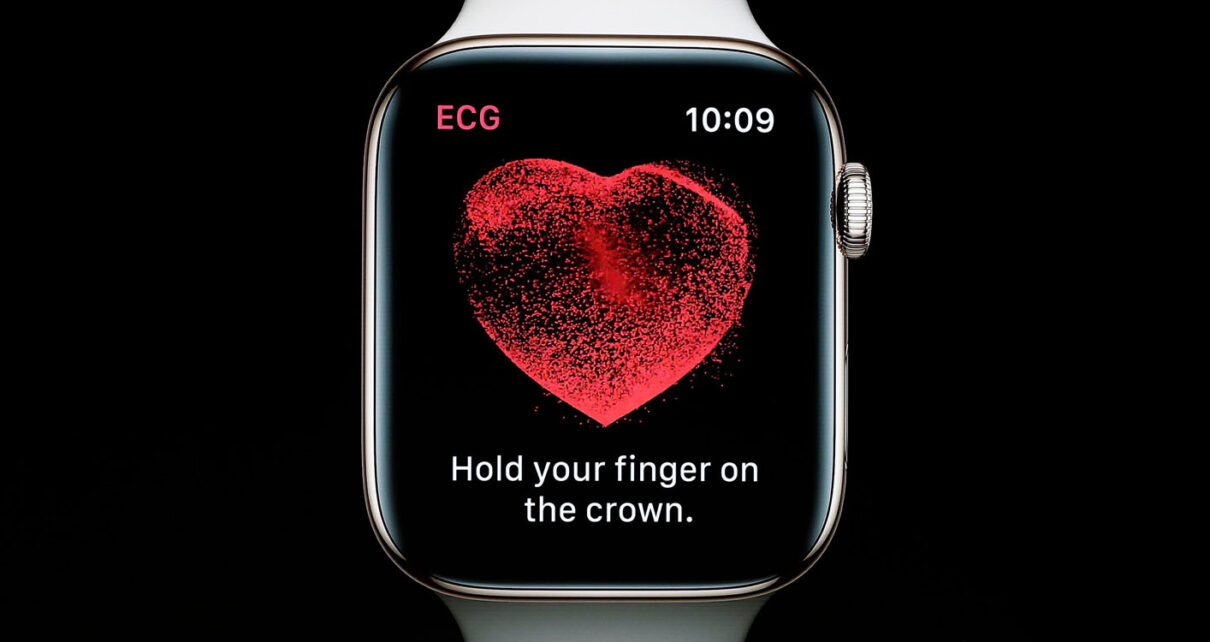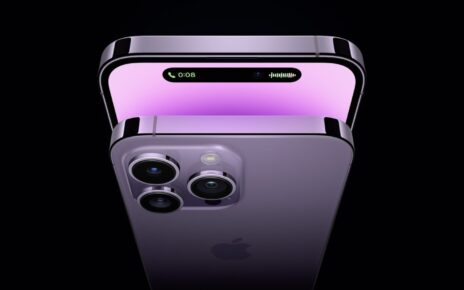Apple’s forthcoming launch is shaping up to introduce a substantial evolution in the Apple Watch lineup, with Series 10 at the center of a broader health and hardware upgrade cycle. Through a wave of renewed rumors and insider disclosures, the expectations point to more than just larger displays. The next generation is anticipated to feature a refined ECG and heart-rate sensor, enhanced sleep-tracking capabilities including sleep apnea detection, and a redesigned data-processing workflow that shifts critical health analytics toward the iPhone’s Health app. At the same time, visuals and hardware footprint are being recalibrated with bigger screen sizes, refreshed watch faces, and improved water resistance, all while expanding the lineup with a newer, slimmer Series 10 and a continued Ultra family upgrade. The result could be a more capable, health-focused wearable that remains tightly integrated with Apple’s expanding ecosystem, delivering richer insights and tools for everyday wellness and athletic performance.
Health sensors, sleep analytics, and how health data is processed
A central pillar of Apple’s upcoming Watch Series 10 is a comprehensive upgrade to health sensors and the protocols that interpret health data. Reputable insiders familiar with the product program indicate that the watch will house a more capable ECG and heart-rate sensing system than its predecessors. The improvements are designed to yield more precise readings and to unlock a broader array of features tied to cardiovascular monitoring. Among the most notable anticipated capabilities is sleep apnea detection. Early signals suggested this was on the roadmap, and new information corroborates that this function will be integrated into the health-tracking experience of Series 10. Sleep apnea, a condition characterized by periodic pauses in breathing during sleep, would be identified based on aggregated sleep-tracking data gathered overnight.
To operationalize sleep apnea detection, users are expected to wear the watch during sleep for a period of days. This mirrors the approach taken by the newly introduced vitals-centric experiences in watchOS, where continuous data collection over several nights is used to derive meaningful health insights. The objective is to provide an initial screening or diagnostic cue for sleep-disordered breathing, encouraging users to seek medical advice if the data indicate potential concerns. The interplay between sleep-tracking and apnea detection is designed to be user-friendly: the watch monitors sleep stages, respiration patterns, and related physiological signals while the user rests, and the Health app on the iPhone would consolidate the findings into a structured report for review over time.
In a broader architectural shift, Apple is also expected to adjust how health data is processed. Rather than performing all health analytics directly on the Apple Watch, certain analyses—specifically the screening for atrial fibrillation—would be executed by the Health app on the paired iPhone. This shift toward leveraging the iPhone’s processing power and sensor fusion capabilities is intended to improve the reliability of detections and to integrate health data more deeply into the user’s overall health dashboard. The design philosophy behind this approach appears to balance on-device privacy with enhanced analytical depth, ensuring that users retain control of their health information while benefiting from more robust algorithms. It’s important to note that any such changes would come with clear user-facing prompts about data usage, privacy, and the steps required to enable or disable features.
Beyond sleep and atrial fibrillation, the evolving health software strategy is likely to bring about enhancements that expand the health feature set across the watch and its companion phone app. The Health app on iPhone has long been a hub for aggregated data from Apple’s wearables, and the anticipated workflow for Series 10 aligns with a broader objective: to centralize complex health interpretations on the iPhone to enable more sophisticated trend analysis, longitudinal charts, and perhaps new alerting paradigms. For Apple, this approach also reinforces cross-device synergy, encouraging users to maintain a continuous iPhone-Watch data loop to gain deeper insights into cardiovascular health, sleep quality, and daily activity patterns. These changes would not only broaden the utility of the watch but also deepen the value proposition of the entire health ecosystem Apple has built around wearables and mobile devices.
In parallel, the expectation is that Apple Watch Ultra 3 would receive the same family of health enhancements, ensuring consistency across the lineup. This consistency would be crucial for users who rely on the Ultra line for more demanding athletic pursuits or for those who require robust monitoring in challenging environments. The unified approach to sensor improvements, sleep tracking, and the rebalancing of data processing between watch and phone would likely accompany refinements in battery efficiency and overall performance, reinforcing the notion that Apple is stacking its health and wellness capabilities as a core differentiator in a crowded wearables market.
To summarize the health-focused trajectory for Series 10, the watch is expected to deliver a more accurate ECG and heart-rate sensor, introduce sleep apnea detection built into the sleep-tracking workflow, and rely on new data-processing paradigms that push some health analyses to the Health app on the iPhone. Together with Ultra 3, these enhancements emphasize both precision in health monitoring and a more integrated health experience across devices. The overarching goal is to empower users with clearer, clinically relevant insights while maintaining user-friendly access to the data and ensuring privacy and control remain central to the experience.
Bigger screens, new watch faces, and Hermès collaborations
Alongside the health-centric upgrades, Apple’s design and display strategy for Series 10 centers on larger form factors and a refreshed set of watch faces that maximize the impact of the new hardware. Reports indicate that both the smaller and the larger models will offer increased display real estate compared with current generations. The new smaller model is said to have a higher screen resolution than the 41mm option in current lines but still fall short of the 45mm display’s pixel density. Conversely, the larger model would push resolution in a manner comparable to what is seen on the 49mm Apple Watch Ultra, albeit with a slightly reduced pixel density. All told, this combination suggests that Apple Watch Series 10 will be offered in dual sizes—44mm and 48mm—to cover both compact and more expansive display preferences while delivering improved clarity and legibility.
To exploit the enhanced displays, Apple is poised to introduce new watch faces designed to take advantage of the broader canvases. Among the most anticipated is a face called “Reflections,” which reacts to ambient light, providing a dynamic and context-aware aesthetic. Another notable addition is a Hermès-branded watch face named “Regatta,” conceived around the sailing sports competition that carries the same name. Regatta is expected to emphasize quick interaction, enabling users to initiate a countdown timer directly from the watch face itself, a feature aimed at smoothing timing for sailing events and other timed activities.
In a development that hints at deeper collaboration between Apple and its luxury partner ecosystem, there is speculation that the Regatta Hermès watch face will also be made available for the Apple Watch Ultra. If realized, this would imply that Hermès-designed watch faces or compatible series could extend beyond standard Apple Watch models to the Ultra line, signaling a potential expansion of Hermès band design specifically for the Ultra family for the first time. This cross-model availability would underscores Apple’s strategy of aligning fashion-forward partnerships with practical, sport-oriented features, broadening the appeal of the wearables family to both everyday users and high-performance athletes.
Additionally, Apple is expected to introduce a new tide complication for the watch faces, bringing nautical data directly onto the main watch interface. Such a feature would be particularly appealing to divers, surfers, sailors, and coastal athletes who benefit from real-time tidal information. The tide complication would integrate with the watch’s existing data streams, presenting up-to-date tidal states and predictions without requiring a separate app or device. The combination of Reflections, Regatta, and tide data would offer a versatile and expressive set of watch faces that leverage the larger displays to deliver both aesthetic appeal and practical utility.
From a product design standpoint, these face and feature updates align with a broader objective: to ensure that Series 10 not only looks more modern and capable but also feels like an evolution that makes full use of the increased screen area. The goal is to deliver sharper typography, more readable data, and faster, more intuitive interactions with complex information. For users, the net effect is a more engaging watch experience—one that makes it easier to monitor health metrics, track training sessions, and access time-sensitive tools during activities such as workouts, commuting, or competitive events.
In summary, the display and face strategy for Series 10 is not merely about bigger screens; it’s about smarter, more responsive interfaces that capitalize on the increased real estate. The Reflections face’s ambient-light responsiveness promises a more adaptive appearance, while Regatta and related Hermès collaborations aim to blend fashion with functional sport-specific features. The introduction of a tides complication further enriches the nautical toolkit, enabling operators to glean timely environmental context at a glance. Together, these updates set the stage for a confident, larger-display experience that supports both daily use and specialized activities.
Water resistance improvements and the new Depth app
Water resilience remains a core consideration for wearable devices in the Apple ecosystem, and the Series 10 lineup is anticipated to bring tangible improvements in this domain. Historically, Apple Watch Series 9 offered water resistance rated at 50 meters, which suits many daily-water activities but falls short of more demanding aquatic uses such as scuba diving. By contrast, the Apple Watch Ultra series has established a higher bar, with depth-rated capabilities allowing submersion up to 100 meters and support for high-speed water sports down to 40 meters. Against this backdrop, the Series 10 family is expected to achieve certification for high-speed water sports down to approximately 20 meters. This marks a meaningful elevation over the Series 9 while aligning with the Ultra’s water-rooted use cases, thereby broadening the practical aquatic utility of standard Series devices.
A notable practical consequence of improved water resistance is the anticipated inclusion of Apple’s Depth app across the Series 10 family. The Depth app, previously exclusive to the Apple Watch Ultra, would be integrated with Series 10 as part of the broader push to deliver advanced water-oriented features to a wider audience. Depth app functionality typically centers on depth measurement, dive-appropriate data visualization, and real-time environmental metrics that contribute to safer water activities and more informed decision-making in aquatic contexts. The availability of Depth on Series 10 would enable a broader user base to monitor depth and related statistics without having to upgrade to the Ultra line, enhancing the watches’ versatility for swimmers, surfers, kayakers, and enthusiasts who frequently engage in water-based pursuits.
From a user perspective, the combination of stronger water resistance and Depth app accessibility would encourage more diverse usage scenarios. A wearer could confidently wear the watch during activities that involve water exposure or aquatic sports, knowing that the device’s sensor suite and protective design are optimized for such environments. The net effect would be a more resilient wearable that remains a reliable health and activity companion in both dry and wet conditions, expanding the practical value of the Apple Watch across different climates and sports. For Apple, these developments reinforce the brand’s emphasis on endurance-candidate wearables suitable for everyday health tracking as well as high-intensity outdoor or water-sport contexts.
In sum, the water resistance upgrades and the potential Depth app integration reflect a clear intent to unify the Apple Watch experience across the spectrum of use cases. Whether one is swimming laps, engaging in high-speed water sports, or simply walking through rain, Series 10 is positioned to deliver consistent performance. The expected depth certification of up to 20 meters for high-speed water sports would fill a gap between standard wearables and the Ultra’s more extreme capabilities, offering a more robust and versatile platform for aquatic activities. Together with improved health sensors and larger, smarter displays, the enhanced water resistance contributes to a more complete, all-around wearable that supports an increasingly active and health-conscious lifestyle.
Design, size options, and the watch-face ecosystem
The design direction for Apple Watch Series 10 emphasizes a refined, slightly larger footprint that aligns with current market expectations for wearables seeking to balance readability, ergonomics, and aesthetics. Detailed rumors point to a slimmer overall silhouette for Series 10, even as the display area expands thanks to the bigger-case approach mentioned earlier. While the Ultra line remains faithful to its distinctive rugged form, the rest of the lineup—especially the non-Ultra variants—would adopt a more streamlined appearance that complements the enhanced display technology and new watch faces. A slimmer design would also influence strap geometry, case lines, and overall balance on the wrist, potentially broadening compatibility with existing bands while inviting new strap and accessory designs that emphasize comfort and performance.
In contrast to the Series 10’s expected slimming, the Apple Watch Ultra 3 is expected to preserve its core design. This approach would create a differentiated lineup where Ultra remains the high-end, feature-rich option for professionals and enthusiasts who demand rugged durability and advanced sensors, while Series 10 offers a more portable, everyday-focused experience with similar core capabilities. This balance could help Apple appeal to a wider audience—ranging from casual adopters seeking health-centric features to serious athletes needing specialized tools—without blurring the distinct positioning of the Ultra family.
The imaging and display improvements also tie into the watch-face strategy and the broader watchOS experience. With larger screens, the new Reflections watch face can deliver a richer, more responsive interaction model that leverages ambient light to modulate visuals for better readability in varying lighting conditions. The Regatta Hermès face adds a specialized, sports-focused experience that’s designed to provide quick access to timing controls and event-specific tools, aligning with sailing and other timed disciplines. The Tide complication adds a dynamic data layer to many faces, presenting real-time environmental context that is especially valuable to water-based activities and coastal navigation.
From a materials and color perspective, the push toward a sleeker Series 10 may coincide with refreshed finish options and more refined bezel geometries. While specifics on color palettes and finishes remain under wraps, the design language is expected to strike a balance between premium materials and daily wearability. This balancing act would be crucial as Apple seeks to deliver a watch that looks at home in professional settings, at the gym, or during outdoor adventures. Strap ecosystems, including Hermès collaborations, could push further into the Ultra-enabled space with new band designs that pair with Regatta and other new faces, signaling Apple’s ongoing interest in fashion-forward partnerships integrated with performance-grade hardware.
In summary, Series 10 design and display strategy is anchored on a dual emphasis: delivering larger, high-resolution screens that improve readability and aesthetics, while maintaining comfort, durability, and versatility across a wide range of everyday activities. The introduction of new faces, such as Reflections and Regatta, along with a tide-aware complication, underscores Apple’s commitment to marrying form and function. The potential expansion of Hermès watch faces to the Ultra family adds another layer of cross-brand synergy, suggesting that aesthetics and performance can co-exist in the same ecosystem, appealing to users who value both style and functionality.
Ecosystem integration, data flow, and user experience
A salient theme across the anticipated Series 10 experience is deeper integration with Apple’s broader ecosystem, particularly around how health data flows between devices and how users interact with this information. The evolving processing model—shifting certain health analytics to the iPhone Health app—reflects a broader trend of distributing computation across devices to optimize power efficiency, analytics depth, and privacy controls. This structural shift implies that users would benefit from more sophisticated health trend analysis and alerting without sacrificing the immediacy of data collection on the watch itself. For many, this means a more cohesive health journey where the watch acts as a primary data collection device, and the iPhone acts as the analytics engine and personal health command center.
The health data architecture is designed to offer a more integrated view of cardiovascular health, sleep quality, and daily activity across both devices. For users who rely on atrial fibrillation detection, the plan to route certain analyses through the Health app on the iPhone can enable more advanced pattern recognition and longitudinal analysis. This approach could unlock more meaningful health insights by aggregating data points collected over weeks, months, and longer time horizons. It may also enable features like more granular trend charts, improved data visualization, and clearer narratives about health trajectories. As with any health data, user consent, transparency, and control over what is shared and how it is used would be central to the experience, ensuring privacy remains a priority.
From a user experience perspective, this ecosystem-centric approach emphasizes seamless continuity. Users can transition between watch-centric data capture and phone-based analysis without friction, with the Health app acting as the central hub. This continuity supports a broader set of wellness routines, including sleep scheduling, fitness coaching, and health monitoring for chronic conditions. The watch’s sensors—now more precise—feed data into the Health app with an emphasis on reliability and clarity. Meanwhile, watchOS 11 and associated updates likely bring refinements to the interface, including more intuitive navigation of health metrics, simplified setup flows for new features like sleep apnea detection, and improved notification handling that prioritizes important insights without overwhelming the user.
Another aspect of ecosystem integration is the cross-device compatibility and accessory strategy. The Hermès collaboration mentioned in the watch-face context points to a broader aspiration: to ensure that premium partnerships align with the wearable’s hardware capabilities. If Hermès content extends to Ultra models as well, users stand to benefit from a consistent, premium experience across devices with brand-aligned aesthetics and specialized features. This cross-brand synergy can help Apple position the entire wearable lineup as a versatile platform for both health and lifestyle, appealing to users who want a cohesive experience across devices.
On the software front, the anticipated watch faces and new complications—such as the tide indicator—are designed to render real-time data in a user-friendly manner. Rather than forcing users to switch between apps or accounts, the watch will present crucial information at a glance. This approach is particularly valuable for athletes, travelers, and people with health concerns who require timely feedback to guide decisions. The overall user experience is expected to be defined by a balance of depth and simplicity: access to comprehensive health analytics when needed, with streamlined, glance-friendly interfaces for everyday use.
In short, Series 10 is positioned to advance how health data, devices, and software work together. The combination of advanced sensors, smarter data processing, and a tightly integrated Health app experience on iPhone represents a comprehensive upgrade to the way users monitor health, track sleep, and manage wellness across the Apple ecosystem. The emphasis on seamless data flow, privacy-conscious analytics, and fashion-luxury collaboration within the same family underscores Apple’s aim to offer a wearable that is both deeply capable and broadly appealing.
Market timing, broader product context, and what to expect at the event
As the upcoming Apple event approaches, expectations are shaped by a blend of health-focused feature announcements, hardware refinements, and strategic positioning within Apple’s broader product strategy. The event is anticipated to unveil Series 10 with its enhanced health sensors, improved sleep tracking capabilities, larger displays, and the new watch faces described above. The Ultra line’s continued evolution, including the possible parity of health features across the lineup, is likely to be a theme for attendees who follow Apple’s most capable devices.
In addition to the Apple Watch announcements, industry observers expect related ecosystem updates that reinforce the continuity of Apple’s device family. The broader software platform—potentially including updates to watchOS and iOS—would align with the hardware enhancements by enabling more sophisticated health analytics, improved user interfaces, and richer companion experiences across devices. The event schedule typically highlights a range of products and features, and this year’s lineup appears designed to demonstrate a unified approach to health, sport, and everyday use.
Alongside the core Watch Series 10 news, observers often anticipate discussions around A-series devices within Apple’s portfolio, including potential refinements to the Apple Watch SE and continued attention to the Ultra family’s durability and performance features. The hardware strategy would likely emphasize a balanced mix of accessibility and premium capabilities, ensuring that more users find value across the price tiers. A streamlined approach to product naming and positioning could help clarify the family’s distinctions while reinforcing the shared ethos of innovation and reliability that Apple has cultivated.
Beyond the hardware specifics, the event is expected to emphasize the practical implications of these updates for real-world users. The enhanced sleep apnea detection and more sophisticated health analytics would be framed as tools to support better health decisions, improved athletic performance, and everyday wellness. The watch faces and tide complication would be presented as new ways to personalize and optimize the user experience for different environments—from urban settings to sea-level adventures. The broader message would be that Apple is building a more capable, more connected wearable that fits into a diverse set of lifestyles and routines.
For potential buyers and current owners, the central takeaway is that Series 10 represents a meaningful step forward in health monitoring, display technology, and ecosystem integration. The combination of more accurate sensors, advanced sleep analysis, larger and more legible displays, and cross-device data flow would collectively enhance the watch’s utility in daily life and during sports or travel. The event’s announcements are anticipated to set the tone for Apple’s wearable strategy for the coming years, signaling how the company envisions users’ engagement with health data and personal insights across multiple devices.
Conclusion
Apple’s forthcoming Watch Series 10 is shaping up to be a comprehensive upgrade across health sensing, sleep analytics, display design, and ecosystem integration. The expected sleep apnea detection, alongside an upgraded ECG/heart-rate sensor and a shift in health data processing toward the iPhone Health app, signals a more robust health-tracking paradigm. The larger screens, Reflections and Regatta watch faces, and potential Hermès collaborations point to a more expressive and fashion-conscious, yet practical, wearable experience. Improved water resistance, the Depth app’s availability across more models, and a Tide complication expand the watch’s nautical and outdoor utility, reinforcing its role as a versatile companion for daily life and athletic pursuits.
Taken together, these developments suggest a carefully considered strategy to deliver deeper health insights, enhanced usability, and stronger cross-device coherence. The inclusion of Ultra 3-level health features across the series would create a more unified ecosystem, while the design and face innovations would make the watch more visually engaging and functionally capable. If the industry witnesses these expectations materialize, Series 10 could represent a pivotal step in Apple’s wearable trajectory—one that solidifies the watch as a central health and lifestyle hub within a rapidly expanding Apple ecosystem. As always, users should look for official disclosures and hands-on demonstrations at the event to evaluate the practical impact of these rumored features on daily life, health management, and athletic performance.



